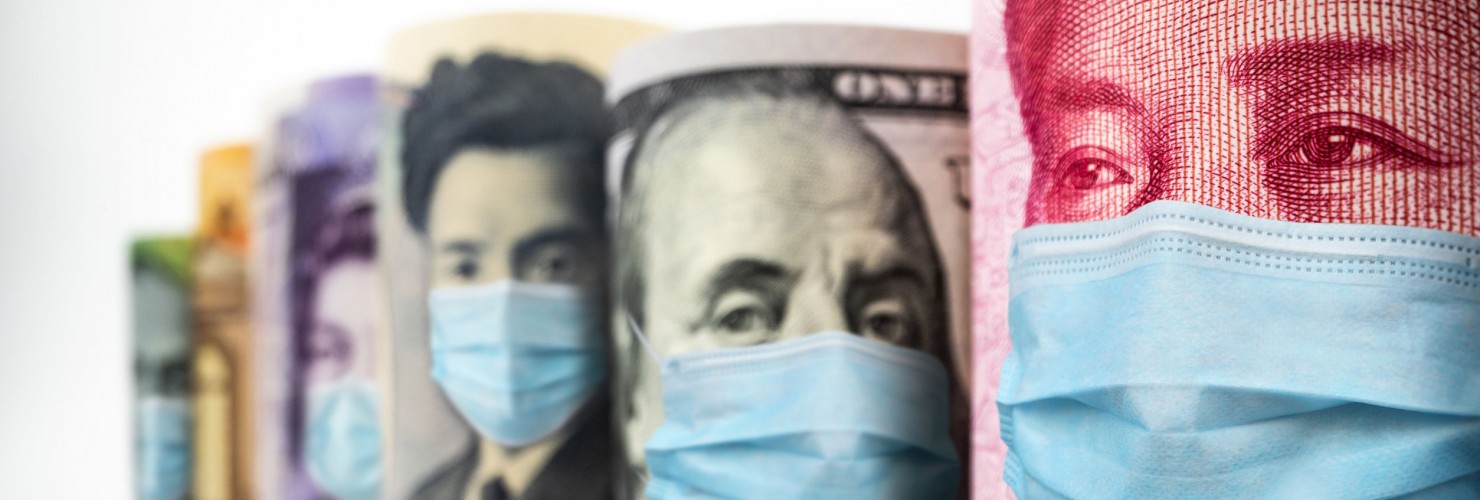

Coronavirus crisis impacts China’s credit system
The Covid-19 crisis has put pressure on China’s economic development, and, by extension, on its financial sector. In a series of short analytical pieces, MERICS Visiting Academic Fellow Michiel Haasbroek discusses the impact on different levels. This first of three parts discusses the impact of the crisis on asset quality.
When China became the first country to institute large-scale lockdowns to control the Covid-19 crisis, the disease hit an economy that was already struggling. The domestic impact could be seen in sharply reduced Q1 car sales and new housing sales, (though they have rebounded since) and in deep troubles for restaurants, hotels and other entertainment venues. As the economic impact has become global, falls in external demand will hurt China’s export-oriented industries, which are largely based in the country’s more affluent regions.
Challenges to economic growth in the recovery may spill over to the country’s banks, especially smaller regional banks that service small and medium enterprises (SMEs). Generally, SMEs struggle to obtain financing despite their major role in employment and job creation. They receive better support from the smaller banks focused on specific regions or cities. This twin-track financial market is revealed in the declining market share of China’s traditional “Big Four” banks – Agricultural Bank of China (ABC), Industrial and Commercial Bank of China (ICBC, and the world’s largest by assets), Bank of China (BoC) and China Construction Bank (CCB) – and is a trend that is likely to increase.
Smaller banks are the weakest link in China’s financial system
However, these smaller banks have weaker risk management and lower capital buffers. They have been supporting an increase in leverage for SMEs, right at the moment when these enterprises saw their profit margins decline. It can therefore be inferred that smaller banks are the weakest link in China’s financial system. Reports point to 13 percent of Chinese banks at risk, as they were seen by aggressive new regulator Guo Shuqing to have “expanded blindly”.
Smaller banks are particularly exposed to economic shocks: a recent stress test showed that 17 out of 30 sampled banks would fail capital adequacy tests if overall economic growth were to fall to just 4.15 percent. In its 2020 Financial Stability Report, the China Banking and Insurance Regulatory Commission (CBIRC), promised support to increase capital levels for these lenders. However, the regulator’s pledge was made long before the scale of the Covid-19 pandemic and its effects were clear. Nevertheless, it may well have given banks the confidence to maintain high dividend payments.
While it would be overly simplistic to focus solely on Hubei, it is worth noting that large national banks have commented in earnings calls that their exposure to Hubei is below 5 percent of the loan book. Local banks such as Hankou Bank, Wuhan Rural Commercial Bank and Hubei Bank are heavily exposed to the province. However, Hubei accounts for around 3.5 percent of system-wide credit assets. Wuhan is a logistical and industrial hub so what happens to firms there will have ripple effects across China. The 2019 failure of Baoshang bank demonstrated how a shock involving a smaller lender can reverberate through the financial system.
Nevertheless, since the crisis has spread globally and is inflicting serious damage to the world economy an assessment of financial vulnerabilities should focus on borrowers rather than geography.
Deleveraging is shelved for now
Regulators have tried to manage credit concerns by allowing forbearance measures and postponement of principal and interest. This will put strains on banks’ liquidity, but the central bank is keeping a keen eye on developments. The People’s Bank of China (PBOC) was quick to address liquidity concerns by injecting around CNY 1.5 trillion (USD 212 billion) through two monetary policy operations. These measures were complemented by targeted cuts to banks’ reserve requirement ratios (RRRs), were liquidity is made available to them conditional on lending behavior.
Nevertheless, potential for a significant increase in credit risk raises the question of how the balance between economic stimulus and financial risk will be addressed. The National People’s Congress (NPC) held in May offered few clues: in his speech, Premier Li Keqiang spoke only of the “effective prevention and control of major financial risks”, acknowledging that the prevention of such risk “must be underpinned by economic growth”.
This represented a clear departure from 2017, when President Xi put the fight against financial risks in a much more existential light. It also offers some insight into priorities: clearly, economic growth and stability imperatives trump financial risk considerations for now. The statement that “M2 (money supply) and aggregate financing [will be enabled] to grow at notably higher rates than last year” signals that deleveraging has been shelved for now, against the resolution of the earlier Central Economics Work Conference.
The full magnitude of risks depends on the speed of economic recovery
The pandemic’s economic fall-out poses new dangers for the already vulnerable Chinese financial system. The full magnitude of the risks will depend on the speed of China’s domestic recovery; on the global economy; on regulatory interventions; and other specific measures to foster stability. While it is unlikely that the current challenges will translate into an episode of systemic risk, any increase of risk on borrower level may directly impact borrowing costs and the availability of financing for corporations.
For now, there are more question than answers: how does the liquidity support relate to debt restructuring? How are banks looking at debt forgiveness and restructuring around BRI projects? What is the true size of debt at risk? In any case, these developments come at a time of already increased economic risk in the banking sector, while official data obscures some of the underlying sources of concern. Regulators have generally taken the right steps, so far. Furthermore, improvements in the institutional structure of financial markets were made prior to the current crisis. However, the major concern now is about the ability of the financial system to support an economic recovery, rather than on micro-prudential risks, such as the stability of individual banks.
The financial system has gone from culprit to savior. Seen as the major source of economic risk at the start of 2020, it is now viewed as a critical to stabilizing the economy. To fulfil that role, it will need clear support from the central bank, regulators and planners; the NPC offered some assurances in this respect.
However, the actions needed to address the current crisis may well mean that efforts around deleveraging and economic restructuring will have to be delayed, to taken up again at a later stage. The current measures are most likely to result in a resurgence of corporate leverage, weaken smaller banks, and favor investment-linked credit demand.
This was part one of a three part series. Continue reading in part two or skip to part three.
